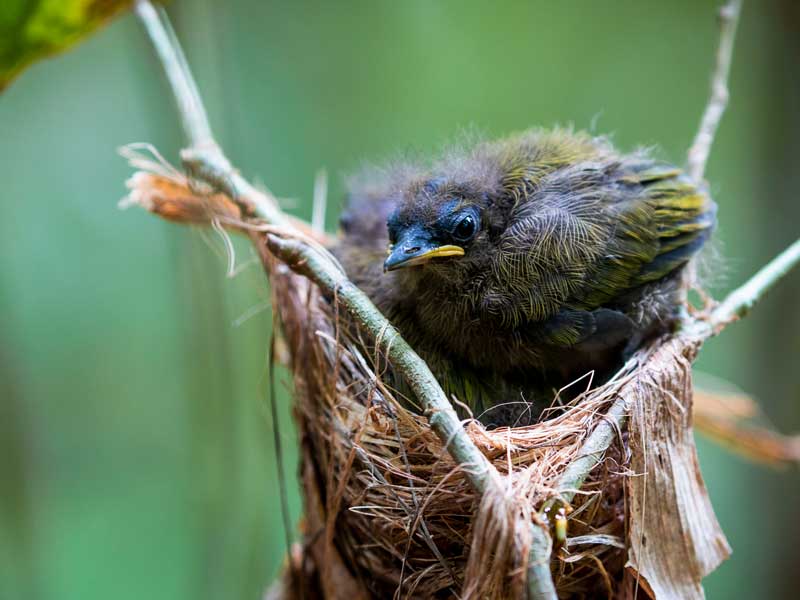This incredible park is located in Golfito, on the southeastern Osa Peninsula. In addition to Corcovado National Park and Golfito National Wildlife Refuge, the park serves an important connective role as a biological corridor in Golfo Dulce.
The park stands out for its impressive diversity of flora and fauna, which makes it an ideal site for the conservation and enjoyment of nature.

Its area totals 15,147 ha on land and 1,200 ha at sea, located in one of the country’s wettest regions. Its dry season extends from March to April, and its rainy season from May to February. Until 1990, it was actually part of Corcovado National Park under the name Bosque Esquinas.

The habitats in the park range from lowland forests that protect vast rivers, gullies, mangroves, lakes and lagoons that are home to mammal, reptile, bird and amphibian species to coral communities.
One event that happens in the park is the spawning of the needlefish (Tylosaurus pacificus), which takes place during the full moon. The steeply sloping beaches of the area, with older sediments, are ideal characteristics for needlefish survival.
The country’s four monkey species can be observed in the park’s forests: the squirrel monkey (Saimiri oerstedii oerstedii), the white-faced capuchin (Cebus capucinus imitator), the ornate spider monkey (Ateles geoffroyi ornatus) and the howler monkey (Alouatta palliata palliata). It is also home to big cats like the ocelot (Leopardus pardalis) and jaguar (Panthera onca).
Inside the park, you’ll be able to visit the El Tajo and La Ceiba trails, as well as a trail to Playa San Josecito, the Sardinal Waterfall, or Río Bonito. Your wanderings will take you through the tropical rainforest and premontane rainforest.
You can also take part in snorkeling, kayaking, paddleboarding and swimming.
How do you get there?
By vehicle: From San José, take Route 27 to Caldera and take the turnoff for the Costanera Sur (Route 34), or take the Interamericana Sur towards Paso Canoas. At kilometer 37, take the exit for Gamba-Guaycara, about 30 minutes from the main road.
By bus: From San José, you can take any TRACOPA bus to Golfito, either via the Interamericana Sur or the Costanera Sur. You’ll need to get off at km. 37. From there, take a taxi to Centro Operativo La Gamba.
Recommendations:
- Respect the regulations for the public inside the park.
- Respect the park’s visiting hours.
- Keep an eye on your belongings; the park is not responsible for lost or damaged equipment or materials.
- Stay on the trails.
- Garbage is not part of the natural environment, take it out of the park.
- Use comfortable clothes and shoes when walking on the trails.
- If you’re going to go on a trail, remember to bring enough water.
- Use sunscreen to protect yourself from the sun.
- Don’t forget any special medication you need.
- Get in touch with local guide associations, tourism operators and local organizations, who will assist you when hiring local tourist guides and tours.
Services:
- Lunch area
- Restrooms
- Showers, no drinking water
- Lunch area
- Camping area (Sector el Bonito)
- No designated parking area is available, but visitors can leave their vehicles near the El Bonito Operations Center while they are visiting the area (dry season only).
Contact: Telephone: 2775-12-10 ext: 126-129
Hours of operation: Every day from 8:00 a.m. to 4:00 p.m.
Rates:
- Costa Rican nationals and residents: ₡800+IVA
- Non-resident foreigners: $10+IVA
- Children under 11 and seniors enter free.






